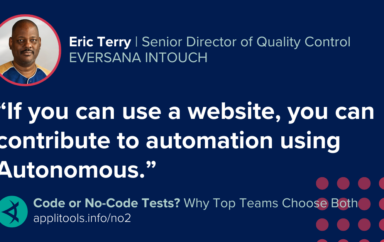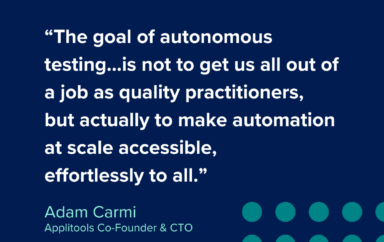Test automation has traditionally lived in the hands of a few specialists—those with the right coding skills, framework knowledge, and time to maintain complex test suites. But software quality touches every part of the delivery process, from product to engineering to QA.
Modern no-code test automation tools are shifting that dynamic. These AI-powered platforms enable teams across roles to create, run, and maintain automated tests—without writing code. And they’re doing it without sacrificing speed, accuracy, or scale.
Here’s how these tools work, what they solve, and why they’re reshaping the way teams approach software quality.
Breaking the Bottlenecks of Traditional Automation
Traditional test automation frameworks come with steep requirements: deep technical skills, time-consuming setup, and scripts that only a few team members can decipher. This creates bottlenecks. When product owners or manual testers can’t contribute, test coverage shrinks—and feedback loops slow down.
No-code test automation tools address this challenge by allowing users to write tests in plain language. Instead of scripting every action, they can describe intent:
“Enter email in login form.”
“Click the primary button.”
This approach makes test cases easier to read, faster to debug, and simpler to hand off between roles.
From Recorded Actions to Readable Test Steps
Most no-code platforms offer more than just simplified language—they streamline how tests are created in the first place. With action recording, testers interact with the app as a user would. Behind the scenes, the tool converts those actions into plain-English test steps using AI and natural language processing.
This drastically reduces authoring time. And since the resulting steps are readable by anyone on the team, debugging and collaboration get a lot easier.
Compared to traditional scripting, this is a faster, clearer, and more inclusive way to build test coverage.
Expanding Who Can Contribute to Test Automation
When test authoring isn’t limited to engineers, more of the team can contribute to quality. That doesn’t just speed things up—it also improves collaboration and visibility.
- Manual testers move from documentation to execution without needing to code.
- QA engineers delegate simpler test flows and focus on complex or edge cases.
- Product owners and business analysts define expected behaviors directly in test interfaces.
- Developers get fast, readable test results that don’t require decoding selectors or scanning logs.
This shift improves velocity while reducing dependencies on any one person or team.
AI Behind the Simplicity: Powering Stability at Scale
The best no-code test automation tools go beyond accessibility—they’re backed by intelligent automation that’s production-ready.
- Self-healing fixes broken locators automatically, even when UI structure changes.
- Visual AI ensures the UI looks right—not just that elements exist in the DOM.
- Root cause analysis explains test failures clearly, saving hours of manual debugging.
These capabilities give teams confidence that their tests will work reliably across browsers, devices, and environments. And when the platform is powered by in-house AI (not third-party APIs), it ensures greater speed, privacy, and control.
Scaling Quality, Not Just Test Automation
No-code test automation tools don’t eliminate testers—they empower them. When everyone can contribute to testing, teams increase their coverage, accelerate release cycles, and reduce time spent chasing down brittle scripts.
What used to take hours of setup or deep technical expertise can now be achieved through a browser session and plain-English instructions. That’s the power of no-code—and the intelligence of modern AI testing tools.
Want to see how no-code test automation works in practice? Watch the full session on-demand and explore how teams are scaling test coverage with AI-powered tools designed for speed, stability, and collaboration.
FAQ: No-Code Test Automation Tools
No-code test automation tools allow users to create and run automated tests without writing code. They use natural language processing (NLP), visual interfaces, and action recording to simplify test creation and make automation accessible to more team members.
These tools are especially useful for manual testers, product managers, business analysts, and others who may not have coding experience. They also help QA leads and developers save time by enabling cross-functional contributors to participate in test automation.
Many no-code testing platforms use AI-powered self-healing to detect and fix broken locators automatically. This keeps tests stable even when the UI changes, reducing the need for constant manual updates.
Yes. Modern no-code tools like Applitools Autonomous are built for enterprise use cases. They support testing across multiple browsers, devices, and resolutions—and include features like visual validation, API testing, and detailed reporting.
Not necessarily. While they simplify authoring, they often rely on powerful AI capabilities under the hood—like Visual AI and test failure analysis—that many traditional frameworks don’t include natively. The result is faster, more scalable automation with fewer brittle scripts.




